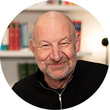Truth matters
AOP chief executive, Adam Sampson, discusses the AOP’s ambition to build the profile of optometry and influence policy

22 September 2022
During my career I have hopped between various disciplines, but this is the first time I have spent any serious time in healthcare. Whenever you move into a new world, one of the first things to do is try to understand the invisible rules which govern it: the language, behaviours, assumptions. As chief legal ombudsman, I found I was part of a highly stratified society, with a rigid hierarchy depending on what type of lawyer you are (a non-lawyer like me was bottom of the pile). The formal opening of the Legal Year at Westminster Abbey is the perfect demonstration: the spectacle of all the judges, barristers and solicitors resplendent in their ceremonial garb. It makes the true meaning of the word “bigwig” clear, with the lesser lawyers being comprehensively out-wigged by those above them.
Coming into the world of optometry, I was struck again by some of these cultural differences. Not just the obvious stuff: it only took me a couple of AOP meetings to know that wiping your specs on the tail of your shirt is a grievous sin. But there are more subtle tropes: an attention to detail, evidence first, a reluctance to generalise, a preference for caution and certainty in everything said.
Don’t get me wrong: these are hugely valuable traits and ones I wish I had more of. And of course, I’m generalising wildly: optometrists are not all the same.
Optometrists are scientists – and as the physicist and novelist CP Snow famously argued in his lecture, Two Cultures, there is an educational and behavioural gulf between scientists and those of us from the non-scientific tradition. What works for us doesn’t necessarily work for you, and vice versa
But that’s the point: people like me mount arguments off the back of very little evidence, whereas most optometrists don’t. Optometrists are scientists – and as the physicist and novelist CP Snow famously argued in his lecture, Two Cultures, there is an educational and behavioural gulf between scientists and those of us from the non-scientific tradition. What works for us doesn’t necessarily work for you, and vice versa.
Take part
That means two things for the AOP. First, we must of course continue to build our positions on the basis of evidence. Truth matters: anything else is morally wrong and also a betrayal of our scientific principles. But if we are to have influence, we have to express those truths in language which appeals to people from the arts tradition as well as the science. It means supplementing numbers with stories, evidence with anecdotes, appealing to the heart as well as the head. The current Voice of Optometry survey, exploring the impact of the cost of living and NHS backlog on eye health, will not just give us hugely valuable data but should, we hope, provide us with real world human stories we can use to influence decision-makers.
The current Voice of Optometry survey, exploring the impact of the cost of living and NHS backlog on eye health, will not just give us hugely valuable data but should, we hope, provide us with real world human stories we can use to influence decision-makers
More important, we need to convince ministers that when we are speaking, we are not speaking for ourselves alone but for the wider public. And that means reaching out beyond our usual communication channels and targeting the wider media world. Learned articles in optometric journals do not influence the people who are making the key decisions about the future of our sector. To reach them, we have to use mainstream media channels, where what we say is in tune with the public mood. You may have seen, for example, recent contributions from the AOP in The Times and in the Daily Express – helping to get the AOP’s name associated with more mainstream topics. We have also just had a more focused piece in the Health Service Journal – deliberately aimed at people who will be making decisions about healthcare commissioning in the new world of Integrated Care Boards and Integrated Care Systems.
A key aim for the AOP is to continue to build the profile of optometry through the media. That will require us to use a form of language which is not natural to some and take positions which are not as exact as we would always like. But what we say will be rooted in evidence and the reality of optometrists’ day-to-day experiences.


Comments (0)
You must be logged in to join the discussion. Log in